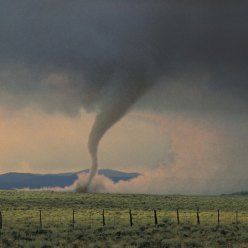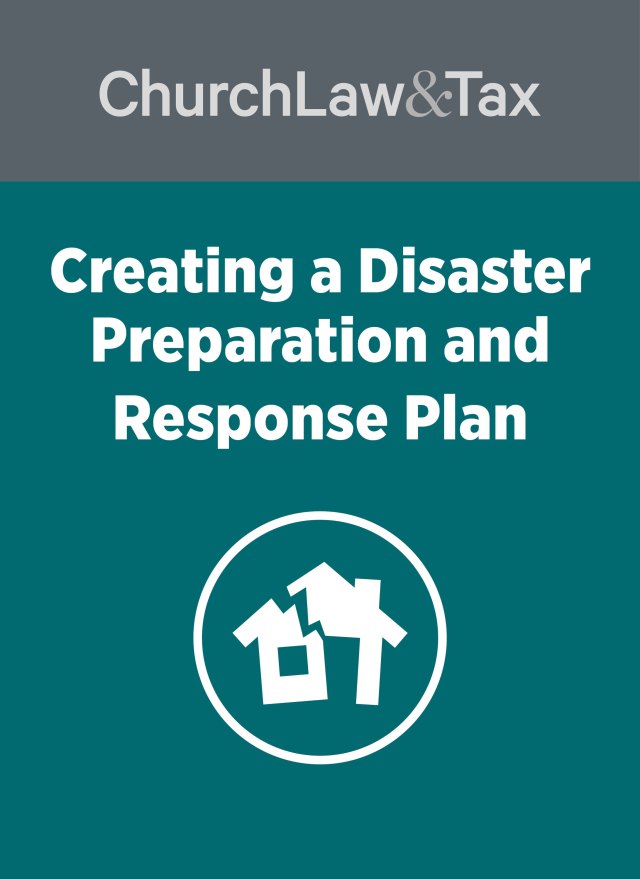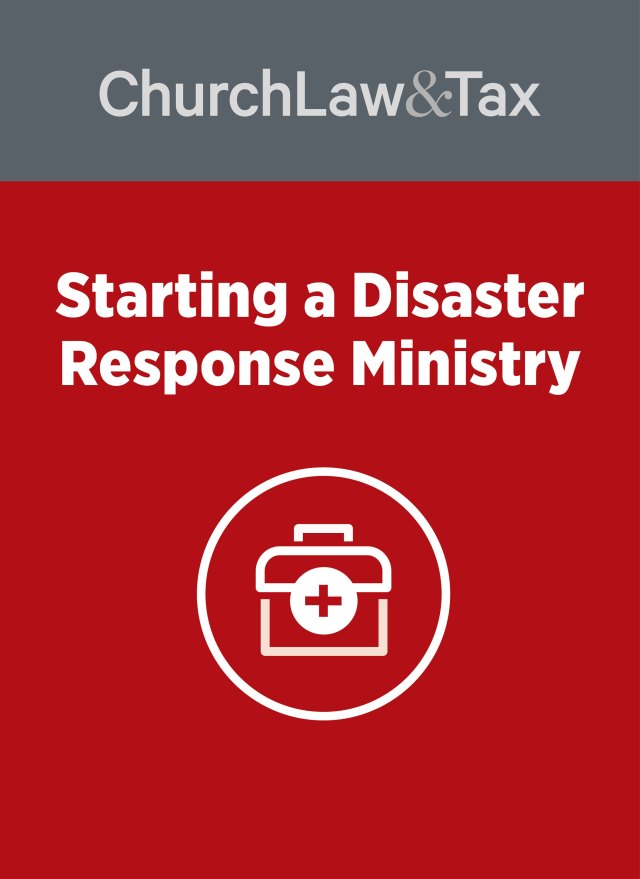Churches may be persuasive in preaching salvation in Christ, but they are often unprepared to save people’s lives in an emergency. However, with foresight and planning, churches can meet the challenges that disaster forces upon them, providing emergency services to the community and surviving financially themselves. Church leaders should assess potential risks and outline the necessary policies and procedures for times of crisis, coordinating with other churches and emergency service providers. In this way, churches can be prepared for even the direst of unexpected events.
Types of Disasters
There are four types of disasters and emergencies that churches ought to be prepared for in order to protect both church members and residents of the community.
1. Natural disasters. This category of disaster is the most familiar and dramatic, since people wrestle with the forces of nature wherever they live.
Hurricanes. The force of a hurricanes measured by the Saffir-Simpson scale is primarily based on wind speed. The National Hurricane Center can predict intensity, landfall location, and impact up to 72 hours in advance. A hurricane can produce damage hundreds of miles inland from the point of landfall with high winds and flooding rains.
Tornadoes. Tornadoes have occurred in almost every state, but are predominant in the southern Plains and the southeast from February through April, and in the Midwest and Great Lakes region from May through July. Tornadoes are measured on the Fujita scale based on wind strength and size. Other wind damage can be caused by violent thunderstorms and fierce winter gales along the Atlantic and Pacific coasts.
Floods. In addition to flooding rains from hurricanes, other floods can occur along rivers and in low-lying areas from a lengthy period of heavy rain accumulation or from sudden, massive downbursts from thunderstorms dumping many inches of rain in only an hour or two. Even with good drainage in an area, basements and other parts of a building can receive significant water damage.
Fires. Massive fires can occur in forested areas and grasslands affected by drought and heat. These fires can rage over thousands of acres, and they are very difficult to control. Localized fires also can be ignited through lightning strikes.
Earthquakes. Damaging earthquakes occur in areas where geological fault lines are located. Tectonic shifts in continental “plates” cause the ground to swell, roll, heave, and shake, often with great force as measured by the Richter scale. Earthquakes occur most often on the Pacific coast, but areas of the Midwest also are vulnerable to cataclysmic shifts in the New Madrid fault line.
2. Biological disaster. Even with significant scientific and medical advances, humans are subject to biological plagues. Medical professionals and researchers warn that natural infection can have a profound impact on us at any time. Defense experts also warn us that we could be subject to a biological attack by terrorists, with pathogenic bombs planted in urban centers.
3. Criminal disaster. Mob action, civil disorder, vandalism, and arson are destructive sides of human nature arising out of irrational anger or thrill-seeking. Churches and other Christian institutions can be ready targets.
4. Cyber disaster. Hackers and cyber thieves can invade and take over even a secure computer network to steal personal data, create “zombies” for their networks, or simply disable the function of a computer network. Cyber vandalism can severely disable operations and cause tremendous financial loss.
Disaster Recovery
While no human being can stand up to nor overcome such destructive forces, there are certain preparations that churches and their independent ministries, such as camps and conference centers, can put into place to minimize risks, reduce damage, protect lives, and lower recovery costs. A key goal in disaster and emergency readiness is effective disaster recovery.
Assess vulnerabilities and weak spots. Review the condition of the sanctuary, offices, classrooms, kitchens, fellowship areas, and athletic facilities. An annual maintenance and repair assessment helps to anticipate the need for repair, updates, and capital improvement. From the perspective of disaster preparation, special attention should be given to structural soundness of the roofing, glass reinforcement, and ease of utility shut-off. For example, in an earthquake-prone area, the building’s foundation may need reinforcement. In a hurricane area, a Christian education wing may need structural redesign to eliminate a flat roof that high winds can peel away. What is the state of the sprinkler system? A church also needs to examine its environment. To what degree is the church’s location prone to flooding? Are there older trees that can topple onto a church building? How easily can the area be evacuated in an emergency?
Review and ensure security of facilities and records. What is the state of computer security and data backup, in the event that computers or network equipment is damaged? What forms of computer network security are in place to prevent cyber attacks? To what extent are hard-copy duplicates provided for essential and/or confidential church records? Is there a lockbox or watertight safe available to store church valuables? What security measures are in place to protect church facilities in the event of a disaster?
Develop policies and procedures for emergency response. Churches should develop a chain of command for authorization and decision-making in an emergency, ranked in order of priority. Calling trees should be in place for emergency contact depending on availability of phone communication. It may be a wise idea to provide a two-way paging and communications system to key people in areas prone to more frequent emergencies, so that communication can be maintained when phone lines and cell towers are down. This form of communication is especially important with county emergency services personnel. As noted below, a church also should determine whether it can function as an emergency services launch site for various authorities and agencies in the area.
Prepare a short-term contingency plan for operations during and after disaster recovery. How will the church resume some form of worship life? How soon? Where? In what ways will church leaders attempt to gather information about church members and their needs? How will the church attempt to draw on its members to provide volunteer assistance for disaster relief? Determine who will meet with those doing damage assessment, especially from the insurer. Who in the congregation has professional skills (or access to them) for the repair and rebuilding process?
In every preparedness exercise, churches that are affiliated with a denomination should check with the presbytery, synod, diocese, assembly, or other judicatory to learn about denominational resources, and also to learn some lessons from other churches that have been through a disaster experience.
Disaster Relief Station
Consider whether the church or facility can also be a disaster relief station. This ministry can be essential for a community’s well-being and a wonderful opportunity to touch people’s lives with the love of Christ. Here are some specific steps a congregation can take to have a disaster relief role.
Determine whether the church can be prepared as a housing or weather relief center. Is the kitchen capable of serving large groups and storing food supplies for extended periods of time? Is there sufficient space to set up cots for sleeping? Are the restroom facilities capable of handling large groups, or is there sufficient outdoor space for portable sanitation units? Consider working in tandem with the local emergency services personnel, police, and the American Red Cross chapter or Salvation Army unit.
Install generator hook-ups to the church’s exterior. The church itself does not need to have an on-site generator, but it can be fitted in advance with hookups for portable generation units provided by emergency services agencies. Then a church without power, but structurally sound, can serve as a shelter.
Create worship and prayer services to seek God’s gracious provision for needs in disasters and emergencies. A church has a unique and essential role in a community to help people bring their grief, anxiety, and fear before the Lord, seeking his comfort and provision for their needs. Prepare materials for a prayer service, litany, or hymn sing. When life returns to a “new normal,” consider also having a service to thank and pray for the emergency service personnel who played such a crucial role in assuring the community’s safety, well-being, and recovery.
This article originally appeared on BuildingChurchLeaders.com.
To learn more about preparing for a disaster, purchase the downloadable resource When Disaster Strikes Your Church, available on ChurchLawAndTaxStore.com.





